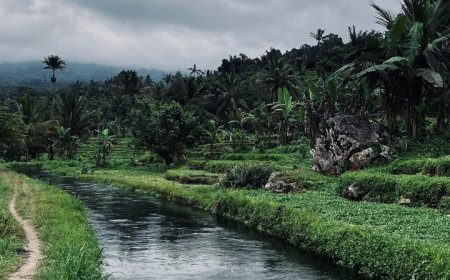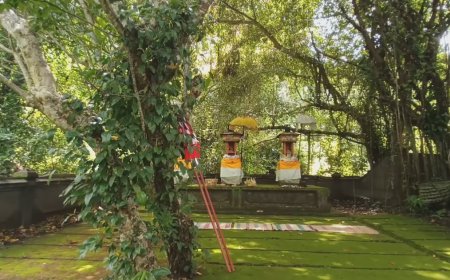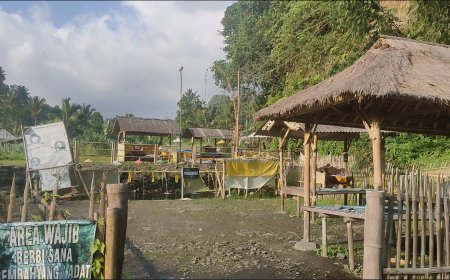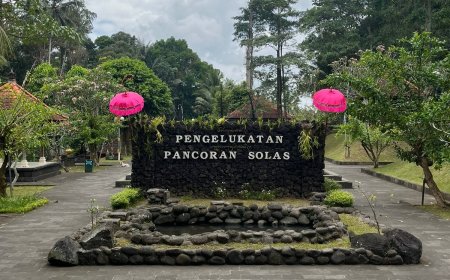The Holy Spring at Candi Tebing Jukut Paku as a Place for Spiritual Cleansing
The island of Bali has many historical relics of high historical value, several places have become historical tourist attractions and tourist destinations. One of them is the Jukut Paku Tebing Temple in Singakerta, Ubud. At the Jukut Paku Tebing Temple, there is an overhang with temple carvings and natural springs that flow clearly and many of them make this a historic place for ask for holy water “nunas tirta” , spiritual cleansing “melukat” and for ceremony for coming of age “pebayuhan”.
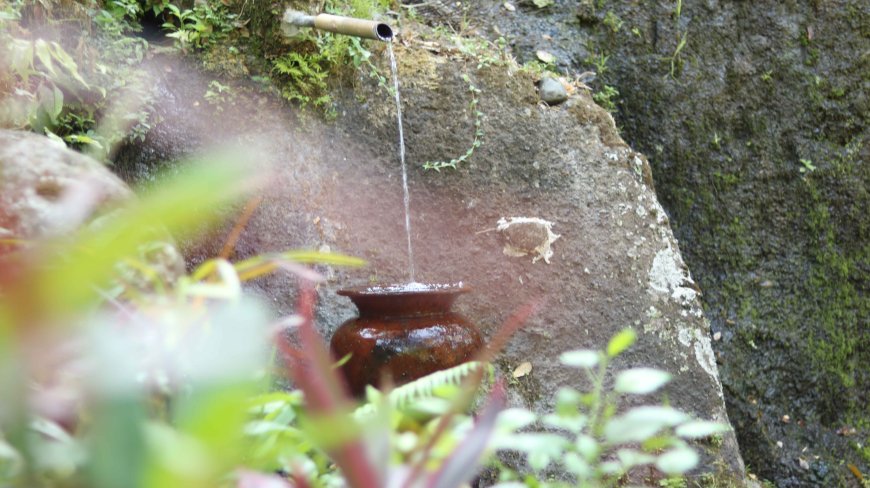
Historical relics in Bali related to the history of the ancient Balinese kingdom have very important value in revealing the cultural and historical heritage of this island. One of the historical relics associated with the ancient Balinese kingdom is the Jukut Paku Tebing Temple, which is always preserved by the community diligently and with dedication.
Historical evidence in Bali such as this relic has become a historical tourist spot and an introduction to history for visiting tourists. As is the case with the Jukut Paku Tebing Temple in the Singakerta Village area, Ubud, Gianyar, Bali, which is a Cultural Heritage with many mysterious and sacred stories. One of the ancient relics protected by Law No. 11 of 2010 by the Bali Archaeological Heritage Conservation Service. In more detail, this temple is in Banjar Jukut Paku, therefore the name of this temple is taken from the name of the banjar where this temple is located.

Jukut Paku Cliff Temple Name Sign (Photo Source: Private Collection)
The location of this temple is on a steep cliff slope, so when visiting this temple you have to go down the 68 steps first. Jukut Paku Tebing Temple Apart from the temple which has a deep historical story, in this temple there is also a holy spring that originates from a spark (in Balinese it is called "klebutan"). With this holy spring, many people come for nunas tirta, melukat and also for pebayuhan.
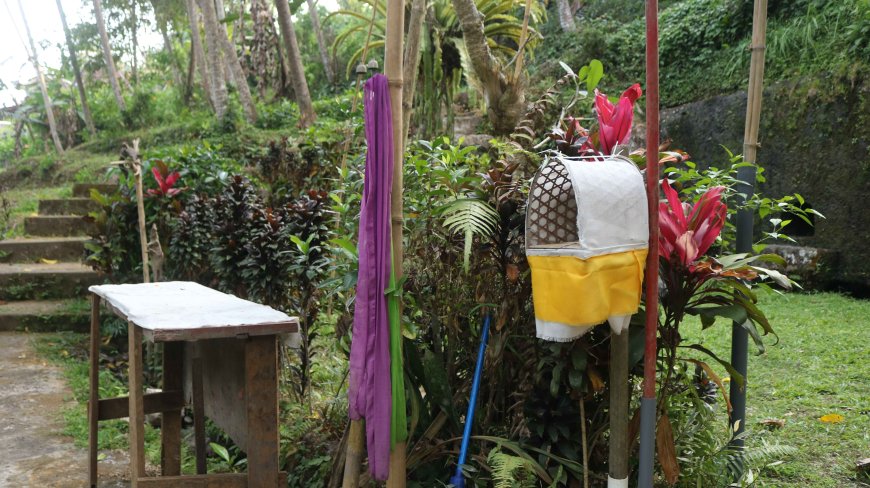
Shawls Available at Tebing Jukut Paku Temple (Photo Source: Private Collection)
This historic place is also known for its sacredness, therefore the manners/people who visit this place are required or advised to wear balinese sarong “kamen” and shawls. Quoted from TribunBaliTravel, Tebing Jukut Paku Temple was once a stopover place related to the arrival of Rsi Markandeya for the first time to Bali, when the Rsi was going to plant panca datu at Besakih Temple. So the Jukut Paku Tebing Temple is a place to stay as well as a hermitage and pilgrimage for Rsi Markandeya. Before continuing his journey to Campuhan Ubud.
Tebing Jukut Paku Temple is also famous for its silence and air that is suitable for doing yoga, many people also come from outside the island of Bali to do yoga at this historic temple. However, there are several mystical incidents experienced by tourists who visit the Jukut Paku Tebing Temple, which indicates the mystical side of this historical cultural heritage. The mystical events experienced by visitors prove that the aura of this location is very strong and great.
To visit Tebing Jukut Paku Temple, entering the temple area is required to be clean. Not menstruating, or clean from the sorrow of the deceased's family or other sorrows. In this way, visitors can maintain the sacredness of Jukut Paku Tebing Temple and avoid unwanted things.
The Jukut Paku Tebing Temple is also considered to be very old, it can be seen from the ancient building models or reliefs and is believed to have been built since the 8th century AD. This temple is known to followers of Shiva's teachings when they visit Bali. The uniqueness of this temple is that it has survived for quite a long time, including thousands of years. Not only the sculptures in the temple, several rooms in this temple are also used as meditation places for those who want to meditate in a quiet, relaxed place with the sound of the river flowing.
Jukut Paku Tebing Temple is located on a steep cliff wall on the west side of the Wos River. The temple carvings are carved directly into the cliff wall which has been leveled, so that the temple appears to jut inwards. The temple inside is at the edge of a cliff wall and has two niches neatly carved as a hermitage. In the middle there is a sculpture that resembles the shape of a temple. As previously mentioned, this temple is also used as a place for melukat because there are two fountains flanking the temple there. There is also a spring that flows clear and never runs out, the water corresponds to the term "klebutan" discussed earlier, which means straight from the ground and can be drunk directly. In the temple there is a waterfall made by young people there.
The Jukut Paku Tebing Temple has four main structures, namely the cliff temple, two hermitage niches, the worship niche, and the jaladwara. The cliff temple is flanked by two hermitage alcoves which were probably used for hermitage. The worship niche is small and was probably used to place statues or other worship facilities. The Jaladwara is in the shape of a Makara which has been damaged but still flows water.

Jukut Paku Cliff Temple Architecture (Photo Source: Private Collection)
Below the temple there is a river called the Wos River which flows into Ketewel Beach, therefore the people use it as a place to float in a series of cremation ceremonies. This river flow is the flow of the Campuhan River which is famous for its purity and clarity. Apart from that, there is also a temple, namely the Penataran Agung Jukut Pakut Temple, where there are twin phallus yoni in the temple. People come to ask for protection, safety, sustenance, and so on.

Wos River (Photo Source: Private Collection)
In the past, sacred places, such as temples and hermitages, were usually built near springs. This is done to make it easier for people to get water for religious ceremonies. Tebing Jukut Paku Temple meets these criteria, because it is located on the slope of a river which has a spring. Tebing Jukut Paku Temple is also equipped with lightning. Petirtaan is a pool used for religious ceremonies. Jaladwara, namely Makara-shaped fountains, can still be found in the lightning. The lightning pool is only visible in front of the temple and hermitage, because the rest has been covered by fertile clay soil overgrown with grass.
The architecture of this temple can also be seen, the design has a very close connection with the Gunung Kawi Temple. Where these two temples were both built using the cliffs at their location. For facilities around the temple, there are several stalls selling food and drinks in the parking area.
In the context of religious tourism, it is used as a place to take photos, many tourists do pre-wedding because the temple building is right on the side of a rocky cliff which gives a unique impression with the background of the photo, namely the temple walls covered in green moss which gives an exotic and natural impression. Apart from the popular name Tebing Jukut Paku Ubud Temple, many people refer to it as Stana Shiva Guru as a place of worship for Ista Dewata.
Strategic location, not far from central Ubud, where many popular destinations are not far from Jukut Paku Tebing Temple, such as Gunung Kawi Temple, Goa Gajah, and Arjuna Metapa. When visiting this place, it is important to maintain polite behavior and avoid actions that could cause damage. Apart from that, we also have to be responsible for maintaining cleanliness while at this location. We need to ensure that the natural beauty of this heritage site can still be enjoyed by future generations.




















